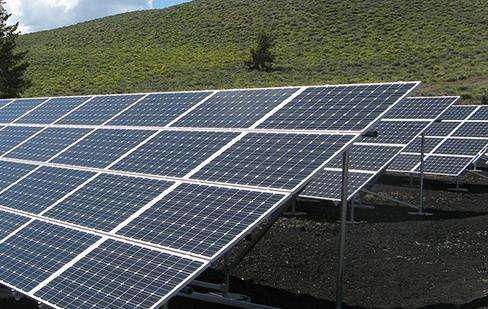What I'm talking about here is power, not capacity.
Power is the electrical energy converted per unit of time.
The power consumption of the load for a day divided by the system efficiency = the actual power of the solar cell for the day. It's easy to understand.
In reality, the electrical energy produced by the solar cell this day/hours of sunshine = the electrical energy produced by the solar cell per hour. It's power.
Heating load calculation of solar heating system is mainly used for two purposes. One is used to determine the area of the solar collector and the other is used to design backup heat sources. and hot water pipes.
Taking the daytime energy storage heating method to determine the heating heat load, the design heat load of the heating system can be calculated.e expressed by the following formula: Q= Q1+ Q2+ Q3+-Qd
Among them, Q1 is the heat dissipation of the wall, Q2 is the heat dissipation by opening and closing the door, Q3 is the heat dissipation by the exhaust hole, and Qd is the heat entering the room by solar radiation. This system is mainly based on radiant heating (more than 60%) supplemented by heat transfer by convection. According to the “Heating and Ventilation Code” and the current technical design situation, in the project, when only the total building area is known, the following heating heat indicators can be used for calculation.
Recommendation table for building thermal index (technical measures 2003: HVAC): Building
Residential type office building hospital
nursery hotel library store Canteen single-storey residential, restaurant, theater room
Thermal index of the roomgym cooking
(W/m2) 45~70 60~80 65~80 60~70 45~75 65~ 75 80~105 110~140 90~115 115~160 290~350 In outdoor conditions of -9C (Beijing), heating demand Use this value to configure the heating equipment, which is equivalent to the power under maximum conditions. The outdoor average in Beijing in winter is -1.6, and the indoor average is 16. The prescribed square meter indicator at present is 20.6 watts. (Take an energy-saving villa with a building area of 200 square meters in Beijing as an example)
Thermal index q=20.6W/㎡
Heat load Q= q ·A (200㎡)=4120w
p>Daily calories Qr = 4.12kw × 3600 × 12 (hours) = 177984KJ
Time value: taking into account In the work and rest habits of most families in Beijing, there is no one at home from 8 a.m. to 6 p.m. Folks, so take 12 hours from the formula above. It can be changed according to the actual situation,for example 24 hours.
The average amount of solar radiation in Beijing in winter (January, February, March and December) is 9,730 KJ/m (the amount of radiation on the heating surface of the collector is the amount of radiation on the horizontal surface) Make a correction: 9730KJ/㎡×1.2=11676 KJ/㎡).
Solar irradiation data
According to the "In the "Annual Book of Meteorological Radiation Data of China" (2001), the monthly and daily average and annual data on the total radiation (unit MJ/m): Month
Irradiation quantity January February March April May June July August September October November December Daily average 6.75 9.37 16.09 16.89 21.23 16.59 17.34 17.23 14.89 9.33 8.81 6.71 Annual total 4912.91 ccogen Assemble in haste >> solar thermal collection zone S=177984KJ/(11676 KJ/m×47% )=32.43m














